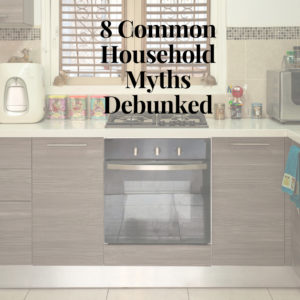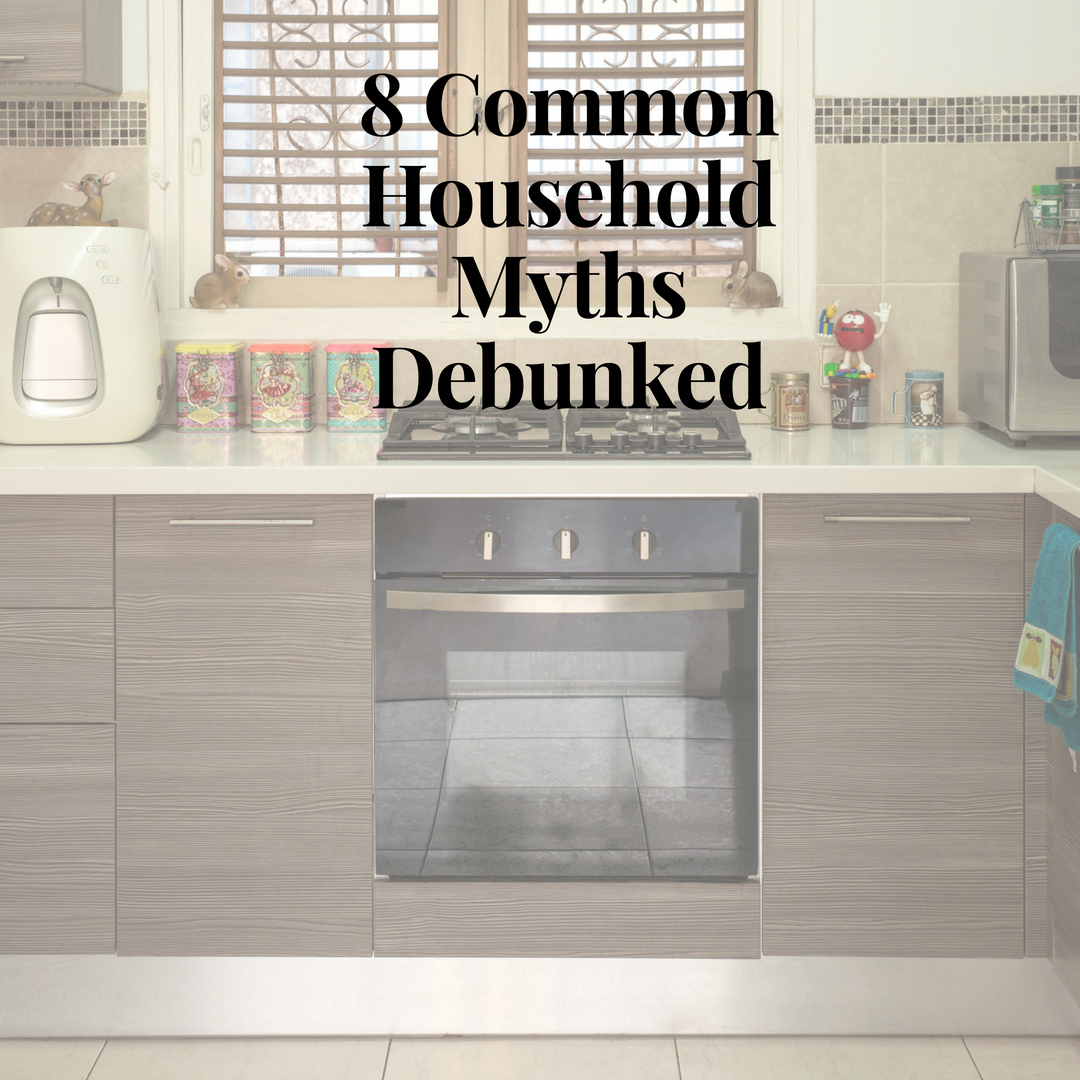 You’re always on the lookout for smart ideas and hacks to manage your home (and save money!) — whether that means listening to the wisdom of your parents who’ve owned a home longer than you’ve been alive, or scouring every corner of the internet for savvy tips.
You’re always on the lookout for smart ideas and hacks to manage your home (and save money!) — whether that means listening to the wisdom of your parents who’ve owned a home longer than you’ve been alive, or scouring every corner of the internet for savvy tips.
But just because a tip has been pinned, shared, and Instagrammed thousands of times doesn’t make it smart. Here are eight tips (myths, really) that most people believe are good advice, but instead will cost you cash you don’t need to spend:
Myth #1: Lemons Are Great for Cleaning Garbage Disposals
What it could cost you: A plumber’s visit (and maybe a new disposal)
Proceed with caution when it comes to this well-circulated DIY fix. Citric acid is a natural deodorizer, but plumbing experts say it can corrode the metal in your disposal. That tough lemon peel can also damage the grinding components and clog your pipes. Next thing you know you’re Googling reviews for plumbers.
The better way: Turn on the disposal and, while running cold water, dump in two or more trays of ice cubes. Despite the clamor, this will safely dislodge buildup on the walls and the impellers, which grind up the food. Use vinegar to deodorize.
Myth #2: Use Duct Tape to Seal Ductwork
What it could cost you: Pricier energy bills
Despite its name, don’t rely on duct tape to seal leaks in your HVAC’s ductwork. Testing by the U.S. Department of Energy found it deteriorates over just a few years (hot air from the HVAC system degrades the glue), letting conditioned air escape without doing its job.
The better way: Use duct mastic (a gooey substance kind of like caulk that dries after applied) to seal metal and flexible ductwork, and use it along with a layer of fiberglass mesh for gaps larger than 1/16 of an inch wide. Use gloves with metal ducts because the edges can be sharp, and mastic is messy stuff.
Myth #3: Bleach Will Banish Mold
What it could cost you: A threat to your health, plus hundreds of $ (even thousands)
Although bleach can kill mold on non-porous surfaces, it isn’t effective on absorbent or porous materials — you know, the places it loves to lurk, like grout, caulk, drywall, insulation, and carpet, according to the Centers for Disease Control and Prevention. Instead, it just bleaches it so you can’t see it. And diluted bleach can feed future mold growth (yikes!) because only the water will be absorbed, which mold just loves.
The better way: Use a commercial anti-fungal product to take out mold at its roots. And only tackle mold removal yourself if the area is less than 10 square feet and you use protective gear, such as a respirator and chemical-resistant gloves. Otherwise, call in a mold remediation specialist who’ll know how to remove it without spreading it’s yucky (and potentially harmful) spores.
Myth #4: Change Your HVAC Filter Every Month
What it could cost you: Around $100 a year
Although the air filter should be changed regularly to keep your home’s HVAC system operating efficiently, this piece of advice is more of a convenient general rule that could cause you to throw away perfectly good filters (and money!).
“The harsh truth is that it’s easier to say, ‘Do it every month’ and know that means people might do it every three or four months,” says homeowner advocate Tina Gleisner of Home Tips for Women.
The better way: The Department of Energy recommends checking, but not necessarily changing, your air filter every month. Change it if it looks dirty, replacing it at least once every three months.
Myth #5: Buy a Rinse Aid for Spot-Free Dishes
What it could cost you: Dollars instead of cents
Most dishwashers now come with a built-in dispenser for commercial rinse aids, plus a free sample to get you started. So now you’re hooked (spot-free glasses every time!), and it has become a regular item on your shopping list, even if it does cost almost $4 for 8 ounces.
The better way: If you’ve never tried, run your dishwasher without a rinse aid. If your water is soft, your dishwasher may deliver spot-free sparkle without any extra help. But if you’re still seeing spots, just fill the rinse-aid dispenser with plain white vinegar (less than a 50 cents for 8 ounces).
Money Tip: Rinse aid does help dishes dry faster, which stops those annoying wet drips from top rack to bottom when you unload. But instead of spending money, unload the bottom rack first while letting the top rack air dry.
Myth #6: Home Improvement is Always a Good Investment
What it could cost you: Thousands of dollars in disappointment
Dreaming of diving into your own pool or adding a second bath to put an end to those morning squabbles? That’s the beauty of owning your own home, you can renovate to make all your dreams come true. And you’ll get money back on most any improvement you do, but don’t expect it for all improvements. FYI: A new bath returns 52% of its cost.
The better way: First off, your own happiness matters, so by all means, follow your remodeling bliss if you’re financially able. But if payback is important, do some research and talk to a REALTOR® who knows what buyers are seeking in your market. The Remodeling Impact Report from The National Association of REALTORS® (the sponsor of HouseLogic) is a fantastic resource to get the scoop on what projects will boost your equity the most. For example, it points out that small projects such as an insulation upgrade, refinishing floors, and even seeding your lawn will recoup almost all, and in some cases more than, your original investment.
Myth #7: Put Dryer Sheets in Air Vents for a Sweet Smell
What it could cost you: Higher energy bills and a potential fire hazard
Social media PSA: Thousands of pins and shares do not mean a remedy is smart or safe. If you follow this popular hack, you’ll block the flow of air in your vents, making your HVAC system work harder and increasing your energy costs. The blockage even can pose a fire risk when the furnace is pumping out hot air.
The better way: If fragrant air is what you’re after, there are no shortage of options available that won’t burn your house down. Give each room — or each day — a signature scent with all-natural scented candles, sprays, oils, and aromatherapy devices. If you’re seeking a scent to mask an offensive odor, however, it’s important to find and remove the source. Some stinky suspects — like mold, mildew, sewage, and gas leaks — can carry health risks.
Myth #8: Product Warranties Will Save on Repair Costs
What it could cost you: $50 to $100 or more
The last time you bought a major appliance or even a hand mixer, you were probably offered a warranty or service plan. While marketed to cover repair costs, these contracts typically cost more than you would ever spend to fix an item. And keep in mind that most manufacturers offer at least a 90-day warranty anyway.
The better way: Maintain the appliance as recommended by the manufacturer, and smartly stash the dollars you would spend on a warranty in a repair fund instead. Also, buy with a major credit card, such as AmEx or Visa. Many credit card companies extend product warranties (for free!) up to a year or so. Might be worth checking to see if yours does.




